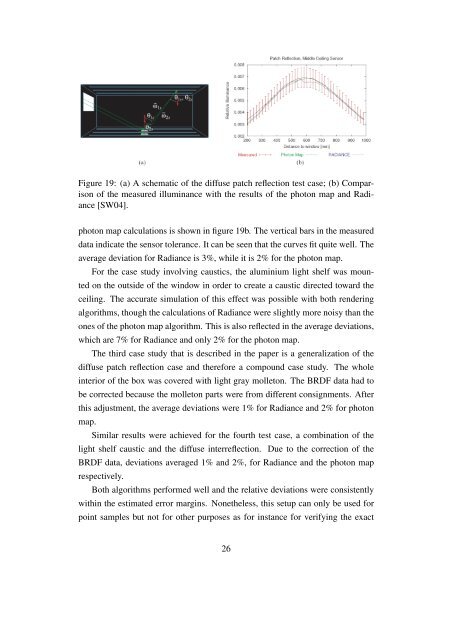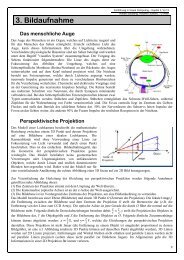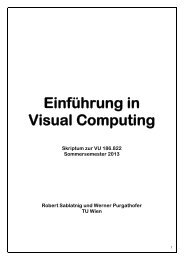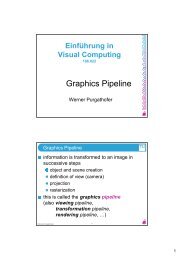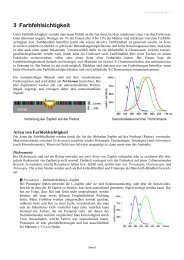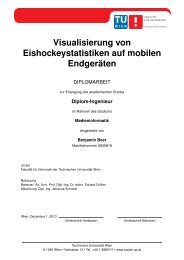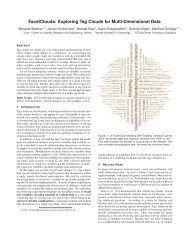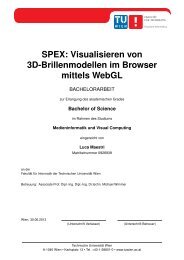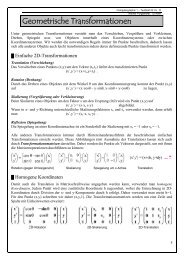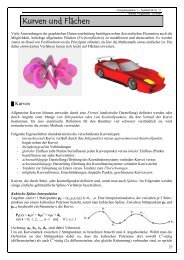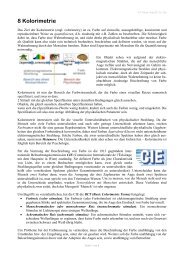Usability of Digital Cameras for Verifying Physically Based ...
Usability of Digital Cameras for Verifying Physically Based ...
Usability of Digital Cameras for Verifying Physically Based ...
You also want an ePaper? Increase the reach of your titles
YUMPU automatically turns print PDFs into web optimized ePapers that Google loves.
Figure 19: (a) A schematic <strong>of</strong> the diffuse patch reflection test case; (b) Comparison<br />
<strong>of</strong> the measured illuminance with the results <strong>of</strong> the photon map and Radiance<br />
[SW04].<br />
photon map calculations is shown in figure 19b. The vertical bars in the measured<br />
data indicate the sensor tolerance. It can be seen that the curves fit quite well. The<br />
average deviation <strong>for</strong> Radiance is 3%, while it is 2% <strong>for</strong> the photon map.<br />
For the case study involving caustics, the aluminium light shelf was moun-<br />
ted on the outside <strong>of</strong> the window in order to create a caustic directed toward the<br />
ceiling. The accurate simulation <strong>of</strong> this effect was possible with both rendering<br />
algorithms, though the calculations <strong>of</strong> Radiance were slightly more noisy than the<br />
ones <strong>of</strong> the photon map algorithm. This is also reflected in the average deviations,<br />
which are 7% <strong>for</strong> Radiance and only 2% <strong>for</strong> the photon map.<br />
The third case study that is described in the paper is a generalization <strong>of</strong> the<br />
diffuse patch reflection case and there<strong>for</strong>e a compound case study. The whole<br />
interior <strong>of</strong> the box was covered with light gray molleton. The BRDF data had to<br />
be corrected because the molleton parts were from different consignments. After<br />
this adjustment, the average deviations were 1% <strong>for</strong> Radiance and 2% <strong>for</strong> photon<br />
map.<br />
Similar results were achieved <strong>for</strong> the fourth test case, a combination <strong>of</strong> the<br />
light shelf caustic and the diffuse interreflection. Due to the correction <strong>of</strong> the<br />
BRDF data, deviations averaged 1% and 2%, <strong>for</strong> Radiance and the photon map<br />
respectively.<br />
Both algorithms per<strong>for</strong>med well and the relative deviations were consistently<br />
within the estimated error margins. Nonetheless, this setup can only be used <strong>for</strong><br />
point samples but not <strong>for</strong> other purposes as <strong>for</strong> instance <strong>for</strong> verifying the exact<br />
26


